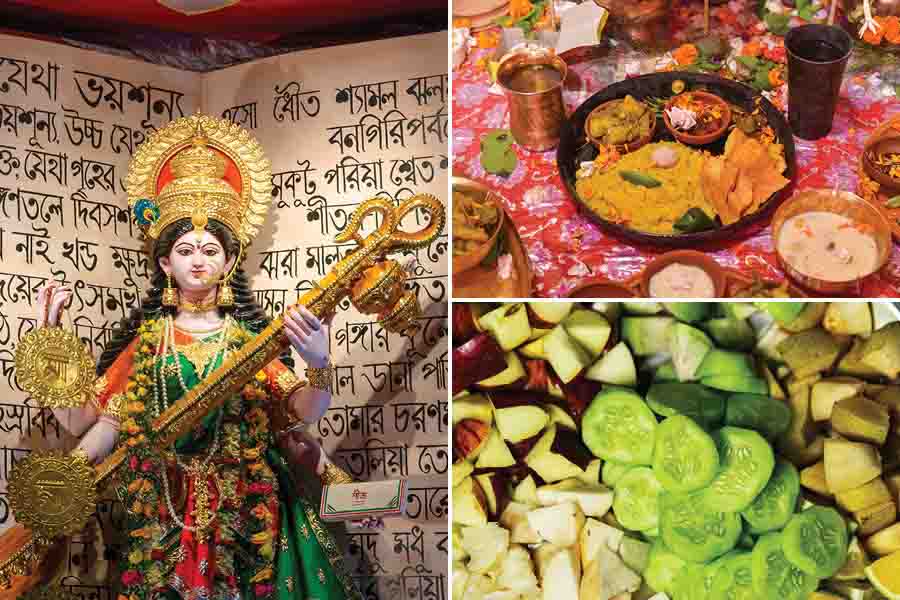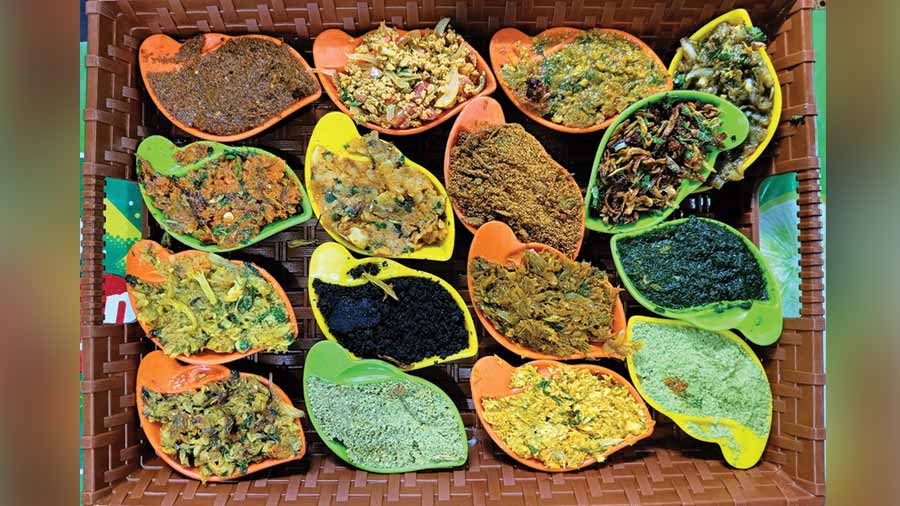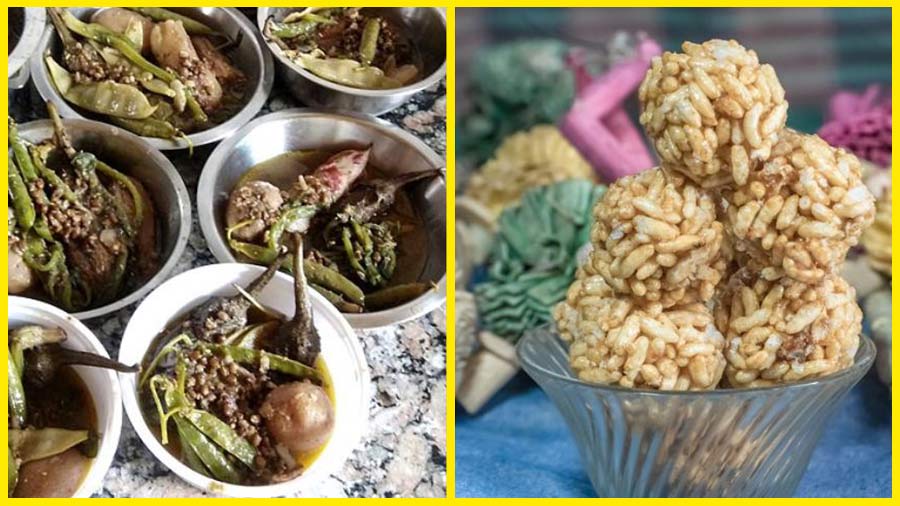Saraswati Puja and its associated rituals hold a special place in the hearts of Bengalis, who love to celebrate baro mashe tero parbon. Each festival is marked by its unique culinary traditions and Bangalis take pride in their rich cultural heritage, especially when it comes to food — Saraswati Puja is no exception. Celebrations seem incomplete without the quintessential bhog’er khichuri, which is the highlight of the festival. Another item that immediately comes to our mind is Indian jujube or kul as we call it. Topa kuler chutney is a must with khichuri along with beguni, phulkopir tarkari or labra (mixed vegetables), papad and payesh.
Love it or hate it, you can’t ignore Topa Kuler Chutney
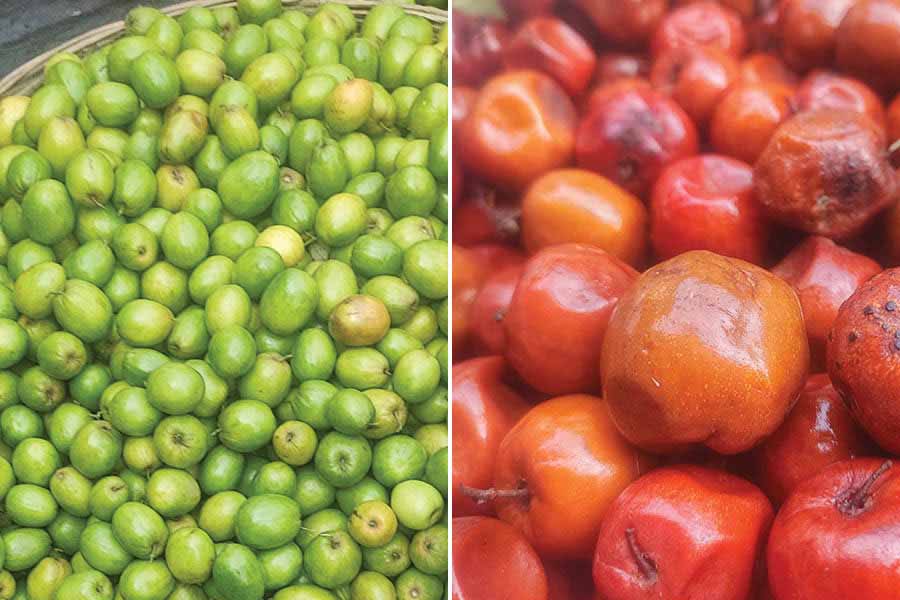
Which one is your favourite? Narkeli kul or Topa kul?
The chutney, typically made with topa kul and tomato, has a unique slimy texture that can be a ‘love it or hate it’ experience. Topa kul is also enjoyed as a makha, although not as part of the puja, with a generous drizzle of mustard oil, along with salt, sugar and green chillies.
In household pujas, the menu often includes ghee-e bhaja luchi (luchi fried in ghee) as an addition. The payesh is usually sweetened with gur. You may also have panch bhaja (five types of fries) instead of beguni.
Jora ilish — a must in Bangal households
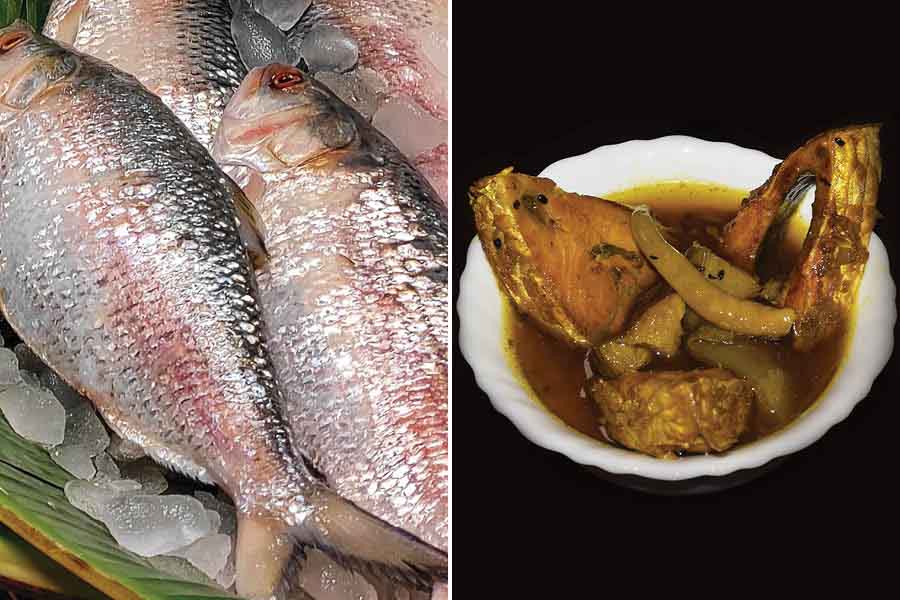
ora ilish (a pair of hilsas) are brought home on Saraswati Puja amid elaborate rituals Shutterstock
Two distinct gastronomical rituals distinguish Ghoti and Bangal families during Saraswati Puja. Bangal families often mark this day with their first taste of ilish, as hilsa is not consumed for a few months after Vijaya Dashami. Jora ilish (a pair of hilsas) are brought home on Saraswati Puja amid elaborate rituals. Mustard oil and turmeric are applied to it. Some families even perform a symbolic marriage of the fish to a nora (grinding stone). In certain traditions, money is placed in the fishes’ mouth and the person who cuts the fish receives it. The fish is delicately cut to avoid scattering its scales, which are then wrapped in a banana leaf and buried in the soil.
Recalling how Saraswati Puja was celebrated at his place earlier, Subhojit Bhattacharya, one of the founders of the culinary channel Lost and Rare Recipes, and a Bangal himself, said, “We are from Dhaka Bikrampur. Having kul before Saraswati Puja was forbidden. On the day of the puja, it was customary to have narkeli kul after anjali. Like in many other families, our menu included khichuri, panch bhaja, phulkopir torkari, and topa kuler chutney. Jora ilish was customary as well. Maachh bhaja was served in the afternoon while at night, a jhol was made with kancha ilish maachh, begun (brinjal) and kalo jeere. We used to have that with steaming rice. Believe me, after abstaining from ilish for three to four months, it used to taste heavenly,” Bhattacharya said.
He explained that the months between Vijaya Dashami and Saraswati Puja are the breeding season for hilsa, and the fish doesn’t taste as good during this time. “Ilish is not just a food, it is an emotion. We romanticise about ilish. Chingri maachh (prawn) is also an emotion for Ghotis but the sentiments attached to ilish are much deeper. Saraswati Puja is considered as Valentine’s Day for Bengalis. I feel that at the onset of spring, the romance is not just about throwing flowers at each other during anjali at the pandals, but a secondary romance is with ilish maachh. My mother’s home is in Benaras. My grandmother used to keep a clay pot on the terrace at night. Dew drops would collect in the pot, and the next morning, this dew would be consumed with raw haldi (turmeric).” Here’s a special recipe by Subhojit Bhattacharya…
How to make Ilish Maachher Begun Jhol
Ingredients:
· Hilsa fish, cut into ring pieces
· Brinjal or eggplant (the narrow ones), cut into long pieces
· Green chillies, as per taste
· Kalo jeere (kalonji or onion seeds): 1/2 teaspoon
· Mustard oil: 3 to 4 tablespoons
· Salt, as per taste
· Turmeric (preferably ground on the day of cooking): 1 teaspoon
Method:
· Marinate the fish with salt and turmeric. Use a little more salt than usual to enhance the fish’s taste
· In a kadhai, heat mustard oil. Fry the brinjal pieces after marinating them with salt and turmeric
· Add kalo jeere and some green chillies to the hot oil. Once you get a light aroma, mix turmeric with water and pour it into the kadhai
·Keep stirring until the oil separates from the masalas. Add the fish pieces
· After simmering for a bit, add some water and let it boil. Check the salt and add more if required
· Add the brinjal pieces and let it simmer until the oil separates from the broth. Then, turn off the heat
·Serve the dish with hot steaming rice
Hilsa gets a grand welcome at home
Alpana Ghosh, a food writer and author of the book Machhlish, shared a unique ritual from Opar Bangla. As per this tradition, the men of the family would bathe early in the morning, smearing kancha holud (raw turmeric), before going to the market to fetch jora ilish for the family. Meanwhile, the women would prepare the borondala (welcome tray) with kancha holud (whole turmeric), sindoor, and mustard oil. Upon the fishes’ arrival, it would be welcomed inside, and sindoor would be applied to it as an auspicious sign. While this ritual may not have a direct connection with the Saraswati Puja rituals, it is a custom observed on that day. The fish would then be cooked with freshly ground turmeric, brinjal, kalo jeere, salt, green chillies and mustard oil, without any additional ingredients.
Gota Sheddho: A strictly vegetarian affair
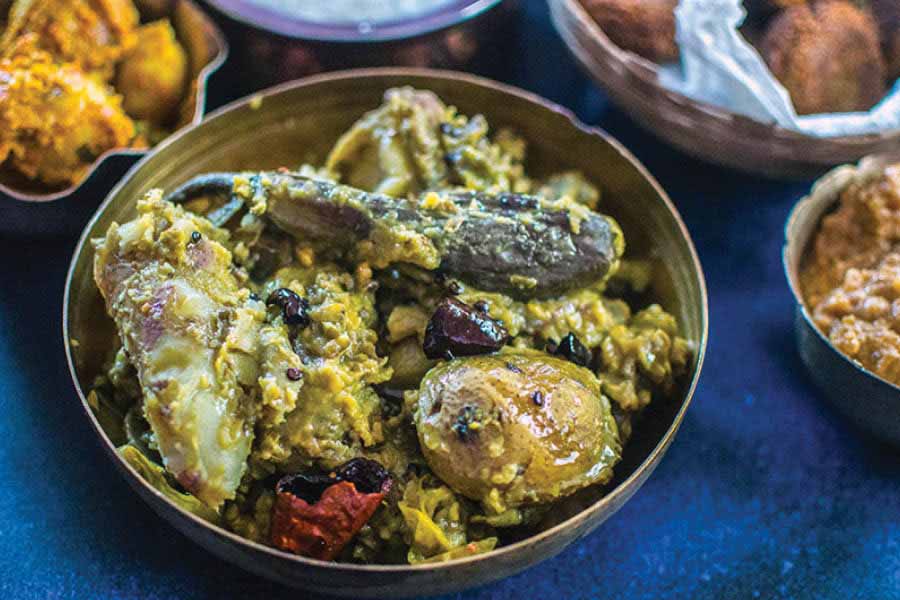
Gota Sheddho is believed to provide protection against chickenpox. (In picture: Gota Sheddho by Debjani of Debjanir Rannaghor) Debjani Chatterjee
While Bangals celebrate Saraswati Puja with jora ilish, Ghoti families observe it as a strictly vegetarian affair. However, they also have a special dish for the occasion — Gota Sheddho, a stew of winter vegetables cooked whole with no spices. Easy to prepare, you can try Gota Sheddho recipe by Debjani Chatterjee of Debjanir Rannghor at home. On the day after Saraswati Puja, known as Sheetal Sasthi, no cooking is done. The day before, vegetables like brinjal, peas with pods, sweet potato, baby spinach, hyacinth beans, small potatoes, and pulses (usually black urad or green moong) are slow cooked with salt over a low fire. This melange of winter vegetables, kept whole and not cut, hence called gota (whole) sheddho (boil or stew). No spices are added to this dish. The food is kept overnight and served the next day with panta bhaat and a generous drizzling of mustard oil. Gota Sheddho is not only enjoyed within the family but also distributed among neighbours and friends. These mashed veggies are rich in nutrition and believed to provide protection against chickenpox.
